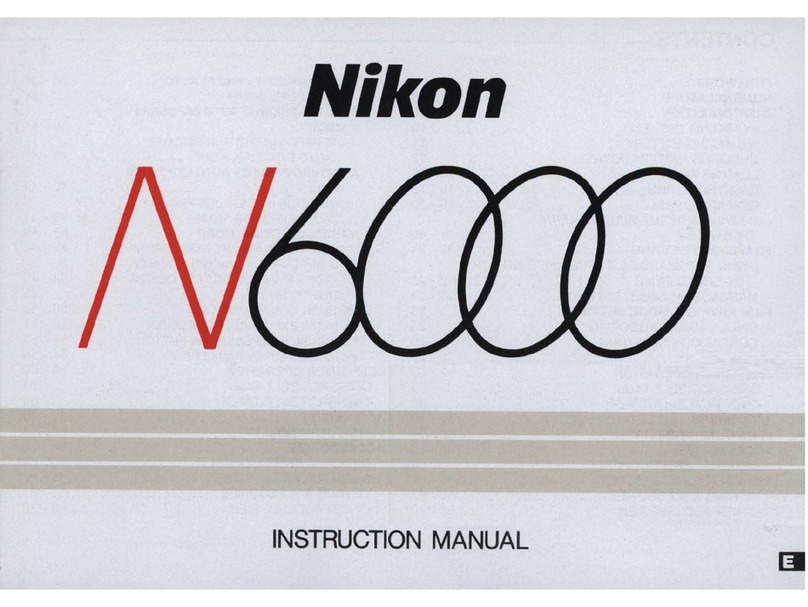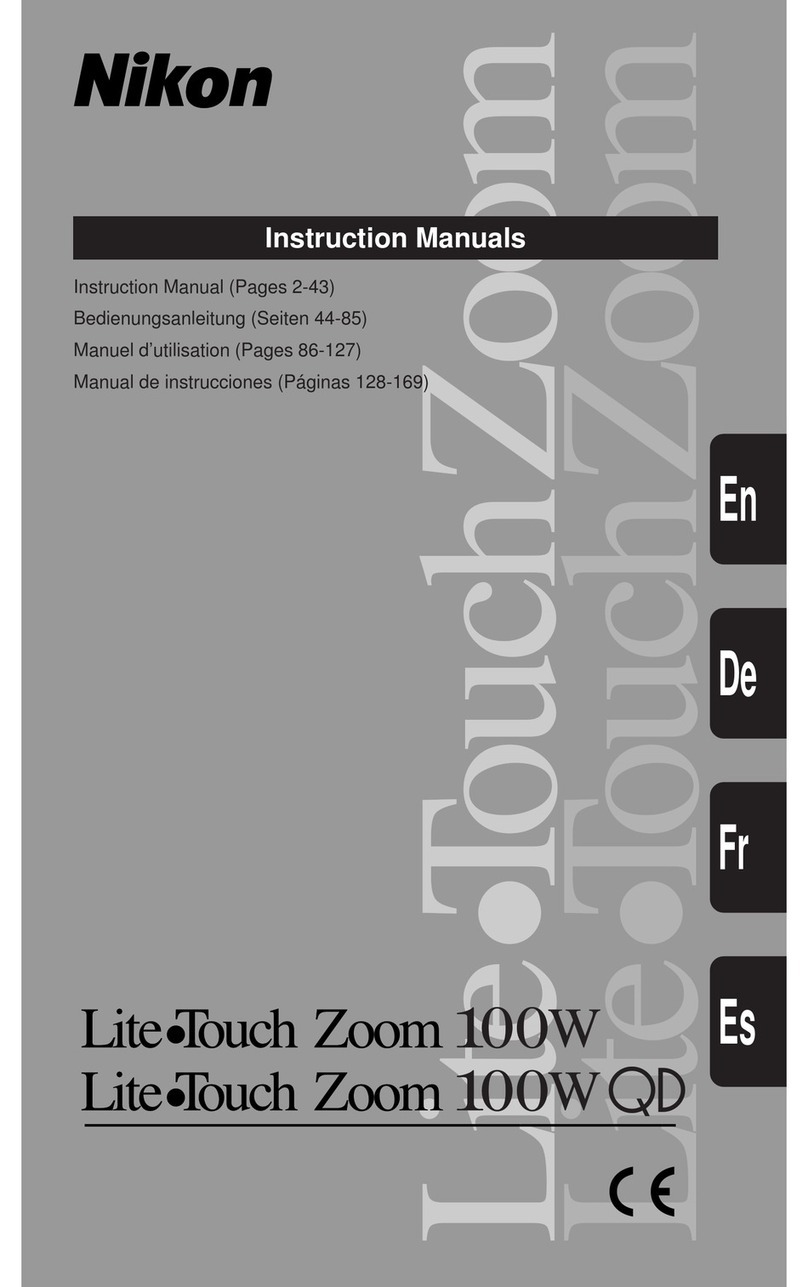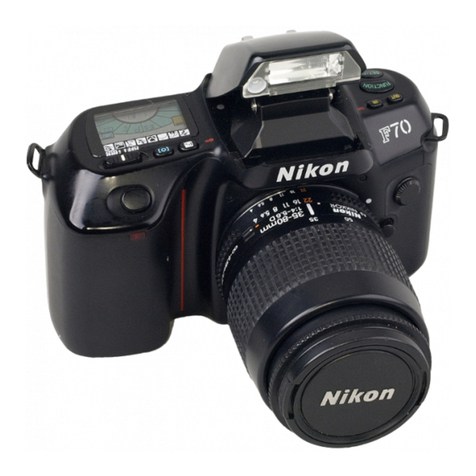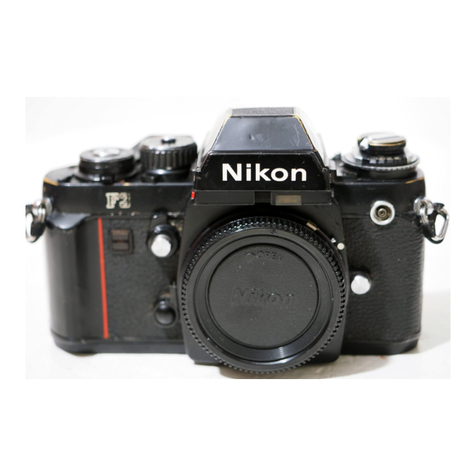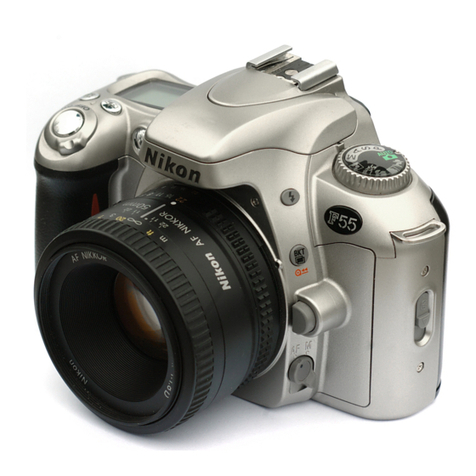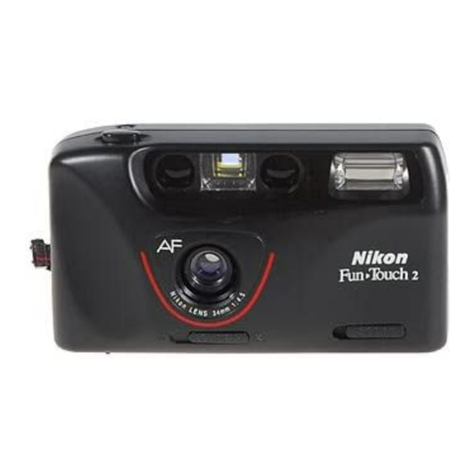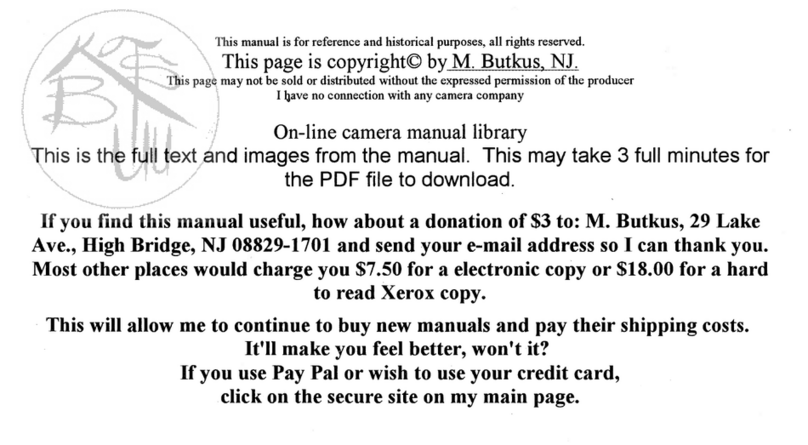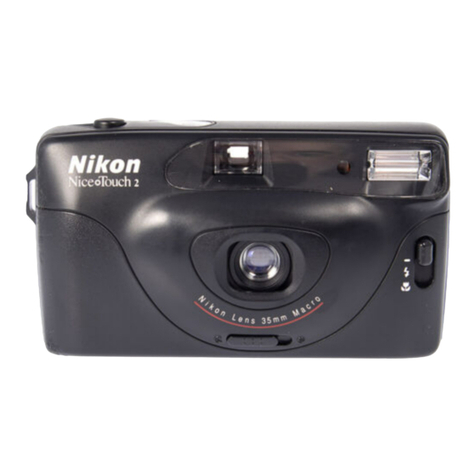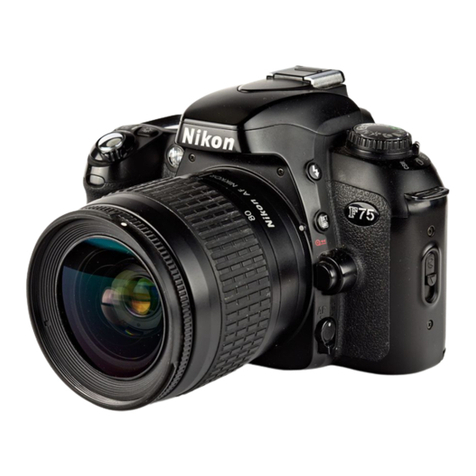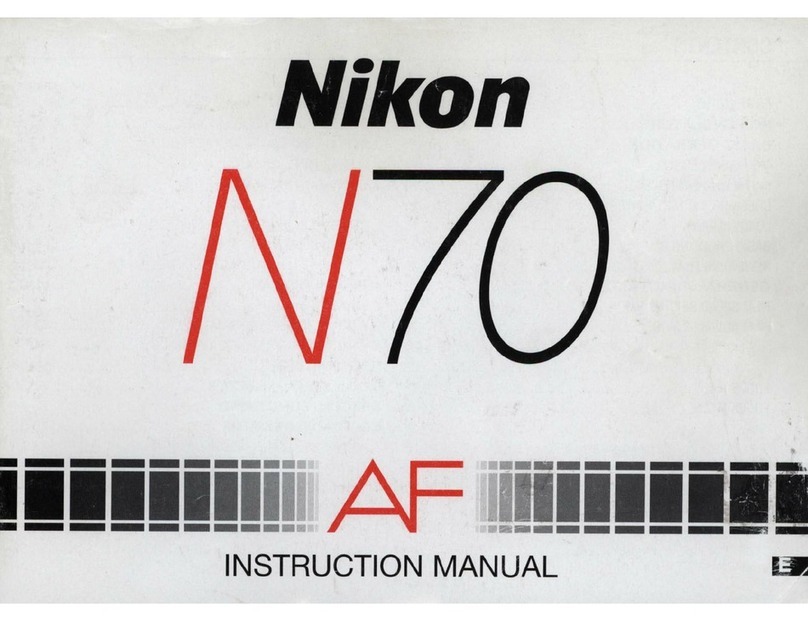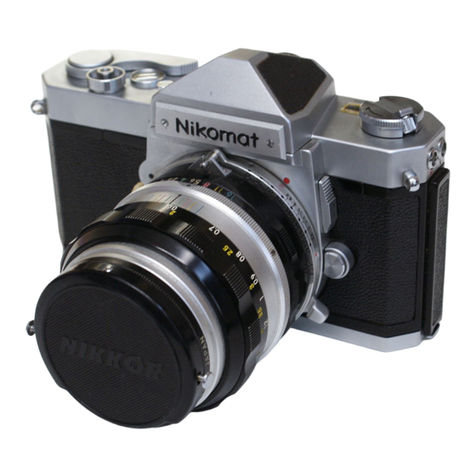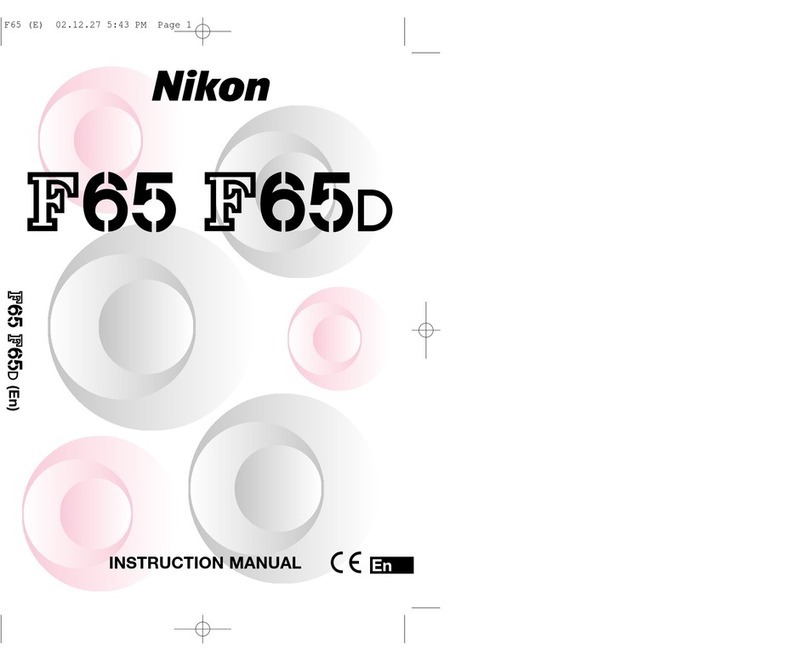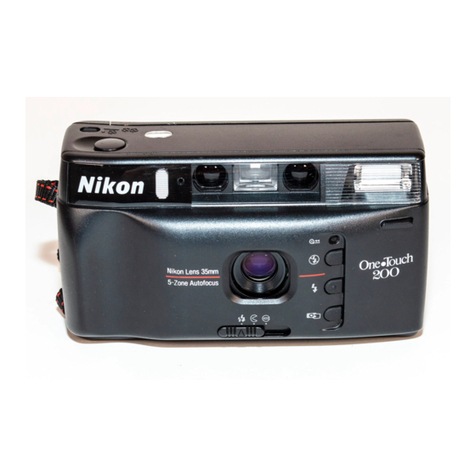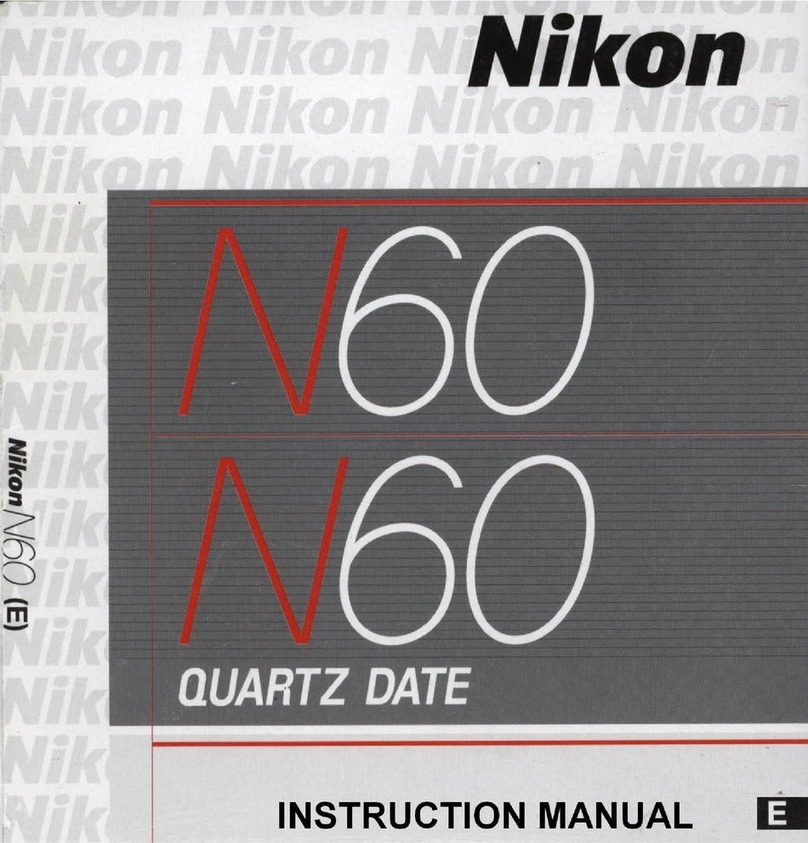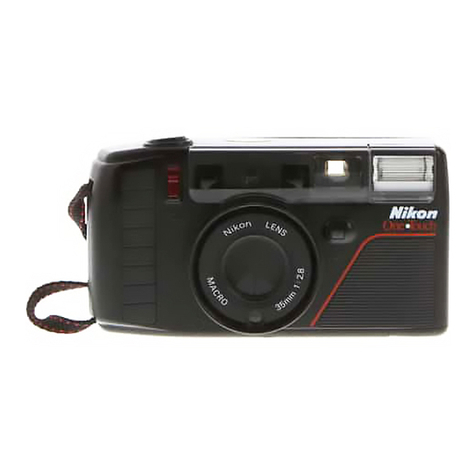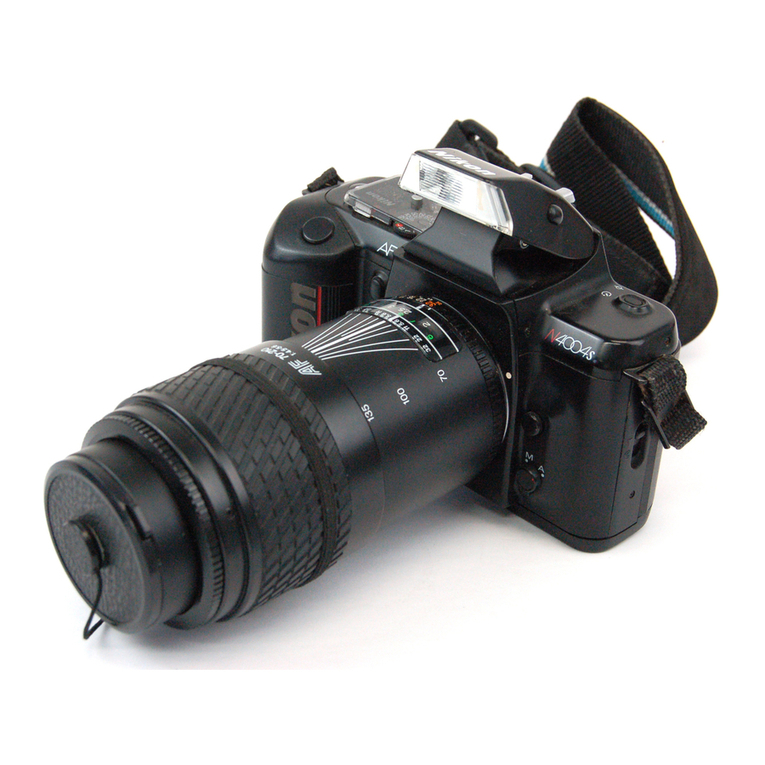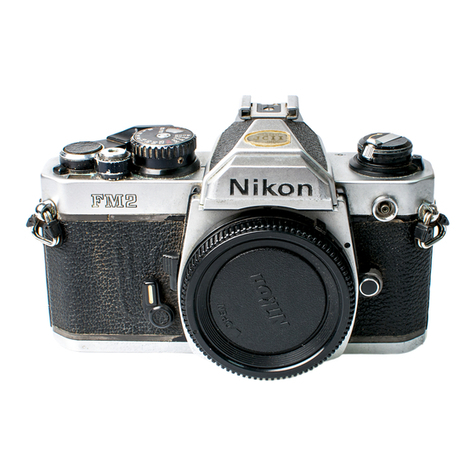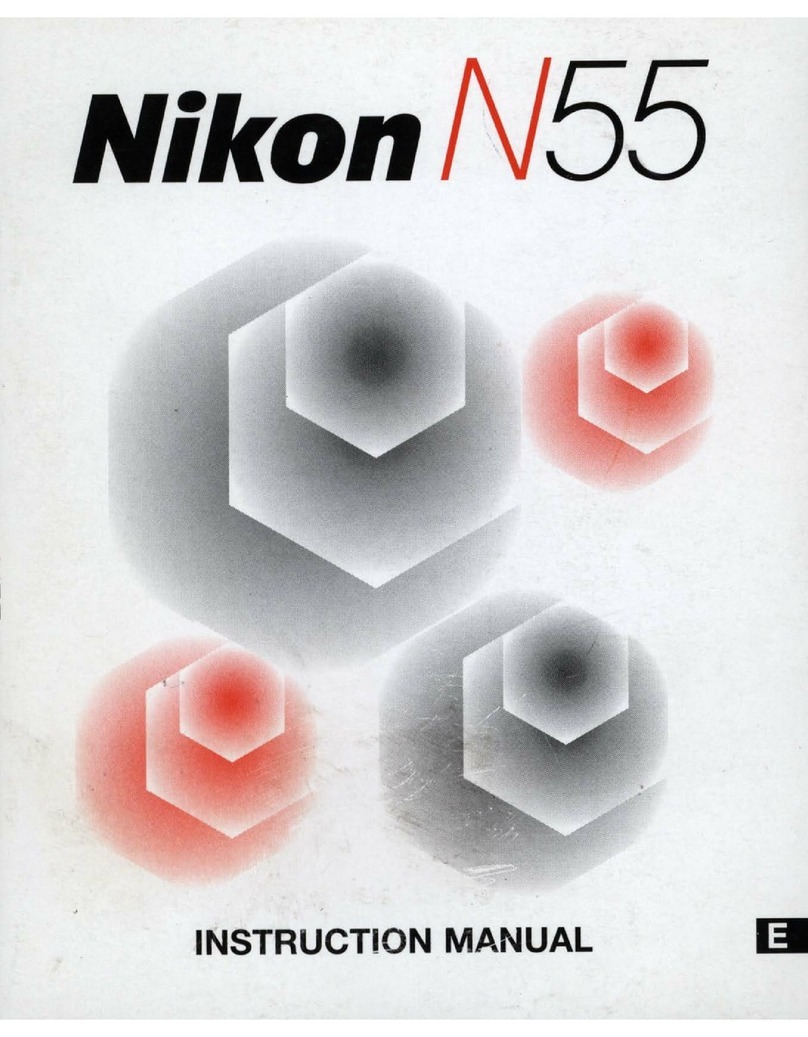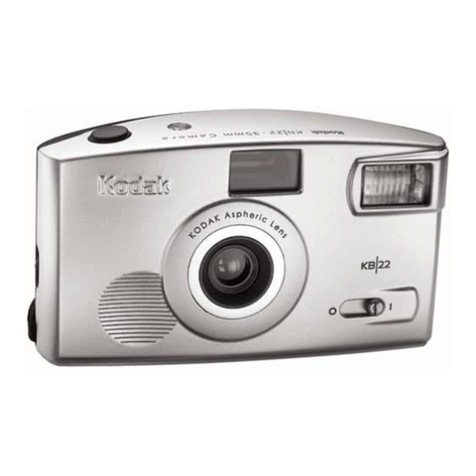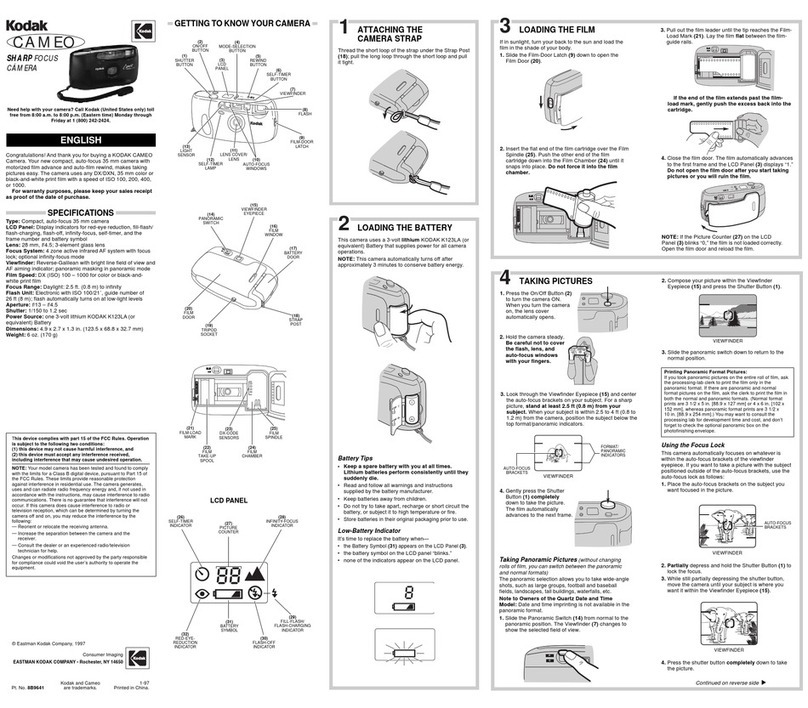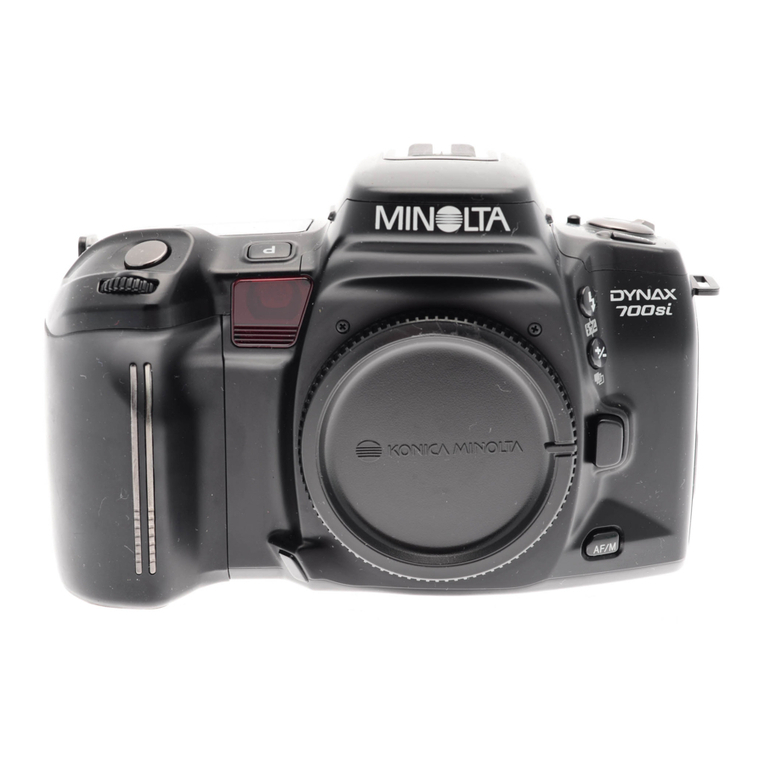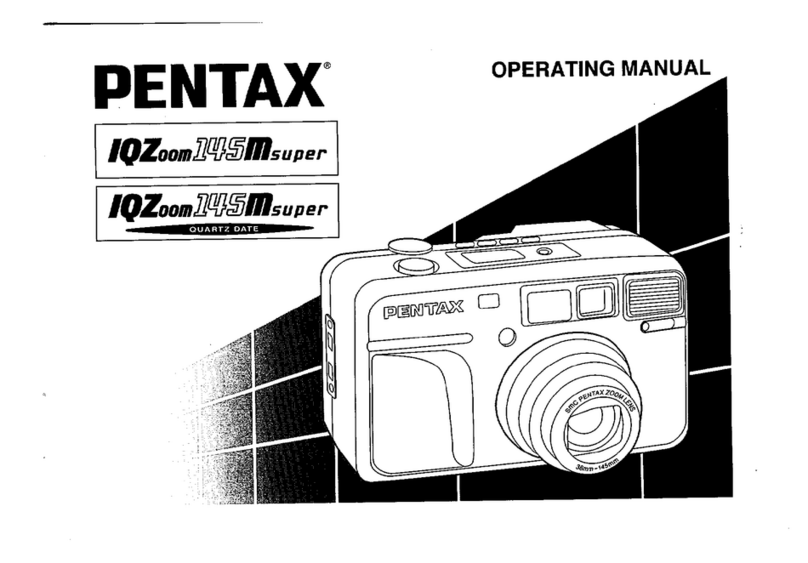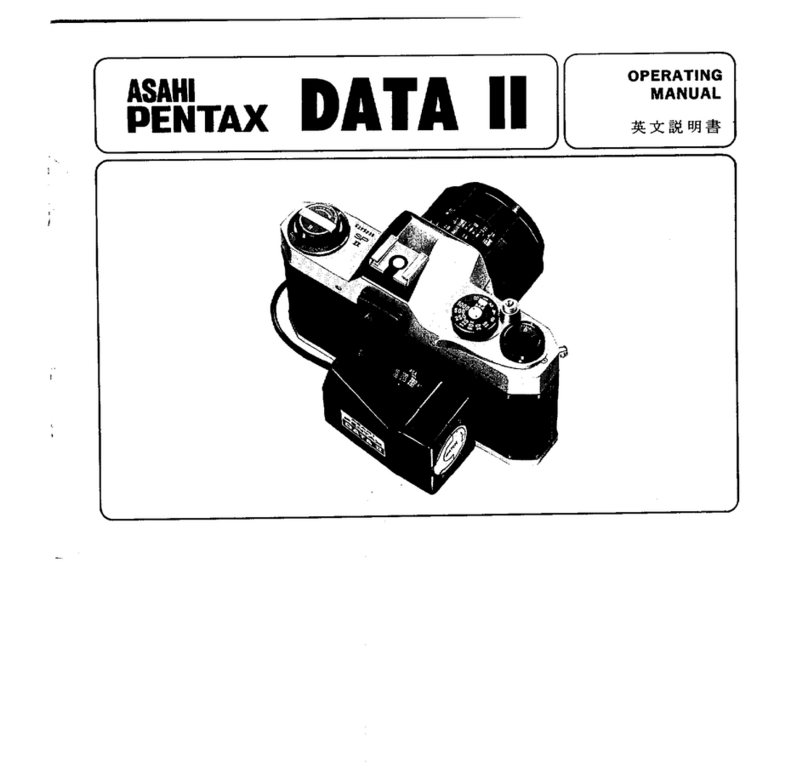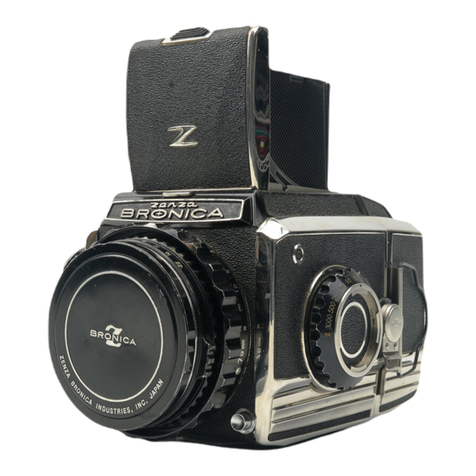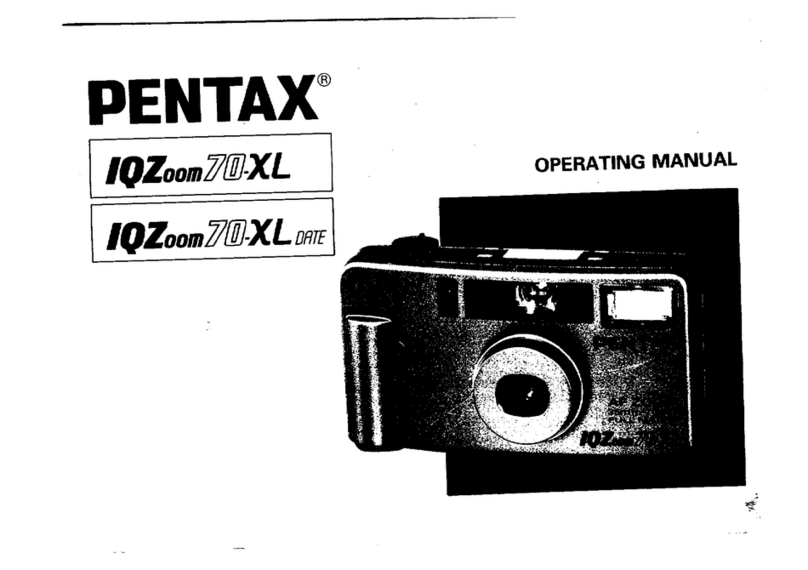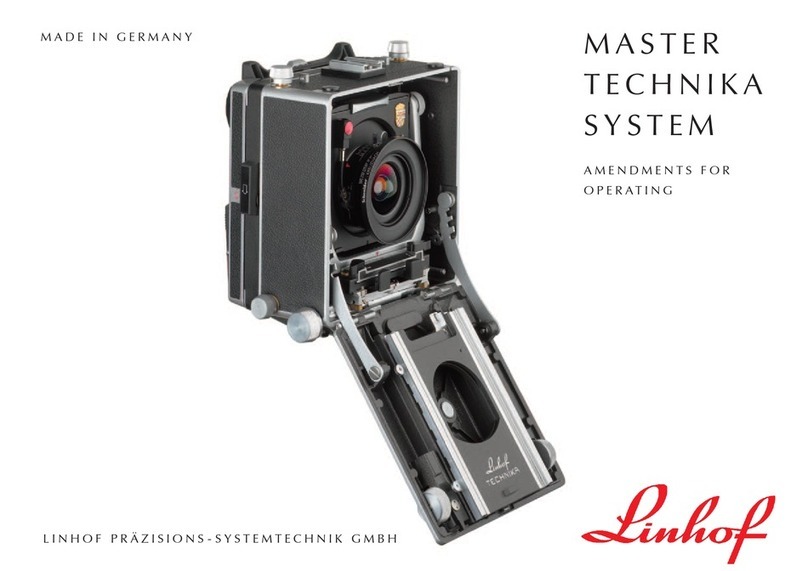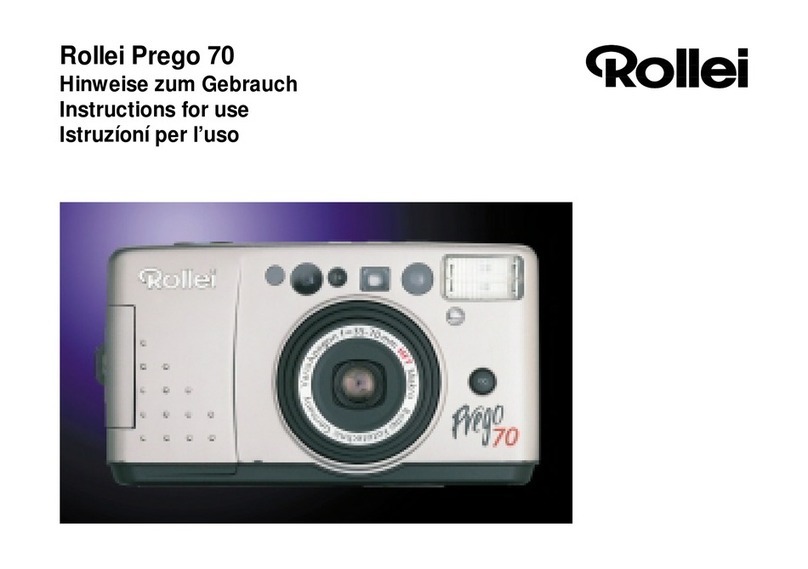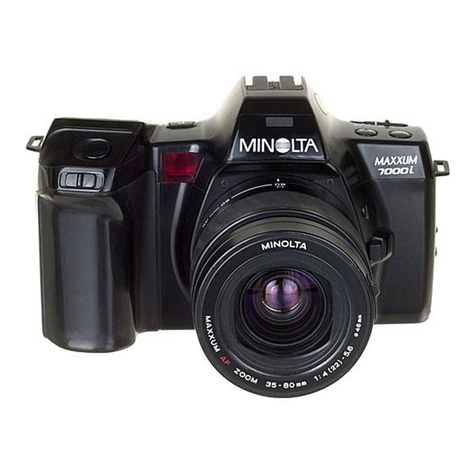TIPS
ON
CAMERA
CARE--------
12
1.
After using the camera underwater, rinse
it
in
fresh
water with the camera back closed
and the lens mounted. When the camerailens
assembly gets dirty, rinse
it
thoroughly
in
fresh
water. Immediately after using it
in
salt water,
rinse
it
thoroughly
in
fresh water to remove any
residue. Otherwise, corrosion may occur
in
minute places like screw holes or the junctions
of parts.
To
prevent this, soak the camera/lens
assembly overnight
in
a basin of fresh water and
move the external parts (for instance, the film
advance lever
CD,
shutter speed/mode selector
dial
®,
ASAilSO film speed dial
@)
, and so on),
then rinse
it
vigorously
in
running water. Finally,
drythe camerailensassemblywith asoft
cloth-
never
by
heating-
before removing the lens
from the camera.
Be
sure to wipe away any
drops of water that may have seeped
in
past the
O-ring. All underwater Nikonos accessories
should
be
handled
in
this way
2.
Never attempt to change lenses, open the
camera,
or
load/unload film underwater.
3.
After shooting
in
the water (especially,
in
salt
water or dirtywater), wipe any drops of water
on
the camera body before removing the film car-
tridge. If any drops of water fall into the camera
when the camera back
is
opened, immediately
wipe them off.
4.
Do
not submerge the camera
in
water with the
flash -socket cover removed.
And
when using
the Nikonos Speedlight, make sure the sync
cord and sensor cord plugs are securely
attached before entering the water.
5.
Should the lens or camera body accidentally fall
. into
sa
lt water during loading (or at any other
time when the interior
is
exposed), rinse
it
im-
mediately
in
fresh water and take the unit
to
any
authorized Ni
kon
dealer or service center
as
soon
as
possible.
6.
If this camera
is
frequently used underwater
(especially
in
salt water or dirty water), make
it
a rule
to
take
it
to a Nikon service center
on
a
regular basis for
an
inspection of the camera's
O-rings. Doing
so
will increase the camera's
performance and life span.
7.
Do
not attempt to rotate the focusing or aperture
knobs beyond their limits of travel; forcing these
knobs will damage the lens mechanism.
8.
T
he
LW-Nikkor 28mm f/2.8
is
water-resistant,
not waterproof, and cannot
be
submerged
in
water.




















